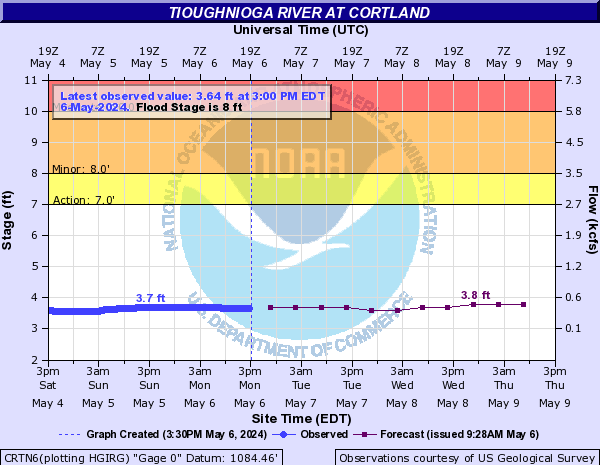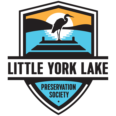The Kettle Lakes Storm Response Team has developed a number of educational resources and action plans for lake residents to protect themselves from potential flood damage. This page contains the latest flood outlook for our area, an FAQ regarding the storm team and links to other resources.
A detailed guide for homeowners is available here.

Storm Response Team Q&A
These are the key questions and answers from the Kettle Lakes Storm Response Initiative. For more in-depth information, download the Storm Response Team pamphlet at Littleyorklake.com/srpamphlet.
The Storm Response Team is a team of lake residents from each of the Kettle Lakes who are working to help everyone minimize the impact of severe storms and flooding.
As we saw in 2021, severe storms can lead to property damage and flooding. It can also contaminate drinking water and create other unsafe conditions.
1. Educate homeowners about the storms and their potential impacts.
2. Provide information about threat levels so that homeowners know to take action.
3. Assess lake water quality after storm events through monitoring (nutrient loading and clarity) in accordance with the NYS DEC Citizens Statewide Lake Assessment Program (CSLAP) and communicating results with homeowners.
4. Assist homeowners to test wells for contamination at a reduced cost.
1. Safety issues may include, but not be limited to boating in and around any debris in the lake, as well as the potential for bacterial exposure.
2. According to a survey collected after the 2021 severe storms, of the 83 respondents, 25 homeowners reported experiencing property damage of $1,000 or more.
1. Page 11 of the Storm Response Team pamphlet provides tips for homeowners to prepare for severe storms
2. Maintain your septic system
3. Make sure your dock is not susceptible to damage due to severe storms
4. Maintain trees/limbs that can fall causing personal injury and property damage
1. Monitor your lake association’s Facebook page and website
2. Sign up for email notifications with your lake association
1. Be sure that docks are secure and protected. You might place water-filled, plastic garbage cans or barrels on your dock to hold it in place, filling to three-quarter mark to allow for ice expansion. Alternatively, store canoes, paddle boats or kayaks on your dock and fill them with water. Be sure to tie them down to the dock rings. Disconnect floating docks from stationary docks and tie to shoreline and clear docks, boathouses, sheds and the shoreline of anything that can float.
2. Secure objects that can cause property damage due to high wind
Drinking water bacterial testing- kit distribution and coordination for lab analysis at Life Science Laboratory will be provided to homeowners suspecting well contamination and reduced cost ($#). Each kettle lake will develop their own system for distribution of bottles and a process for delivery to the testing analysis site. Most associations will coordinate these tasks among multiple lake residents. Contact persons for each of the four kettle lakes:
● Song Lake – President Tony Goddard (#email)
● Tully Lake – President Colleen Zawadzki Karatecolleen123@gmail.com
● Crooked Lake-President Seth Aldrich (sethfaldrich@gmail.com)
● Little York Lake- President Gary Lawrence ( contact@littleyorklake.com)
The Kettle Lake Storm Response representative from each lake association will arrange delivery of water samples to the lab. These samples must be provided within the 24 hour window from time of sampling to delivery. A copy of the Analysis Request is found in the Appendix (#link#) with complete instructions for taking the sample. The homeowner is responsible for providing the fee at the time of service, and this can be bundled as cash or check into the sampling bag. Your lake association representative will provide the text or email, to let you know the time they plan to take samples to the lab so that you may plan to sample within that 24 hour window.
1. Each lake has a person trained to gather water samples in accordance with NYS DEC Citizens Statewide Lake Assessment Program (CSLAP). Levels of nutrient content (e.g., phosphorus) as well as lake water clarity will be gathered immediately after storm as well as one week following and compared with existing baseline data. In some cases, streams entering lakes will also be tested for nutrient loading
2. Each lake has different ways of communicating with homeowners. Typically storm warnings and impacts will be communicated with homeowners through the designated Storm Team Response volunteer via email, the lake’s Facebook page and or website.
All kettle lakes – website and Facebook
Tully – website and Facebook page
Song – website and Facebook page
Little York– email, website and Facebook
Crooked – email, website
1. With high water levels it is important for boaters to slow down to reduce wakes.
2. Avoid swimming in water that may be contaminated. Results of water testing will be available # days after a major storm event.
3. If you suspect your well has been contaminated contact your lake representative to get a testing kit at reduced cost.

